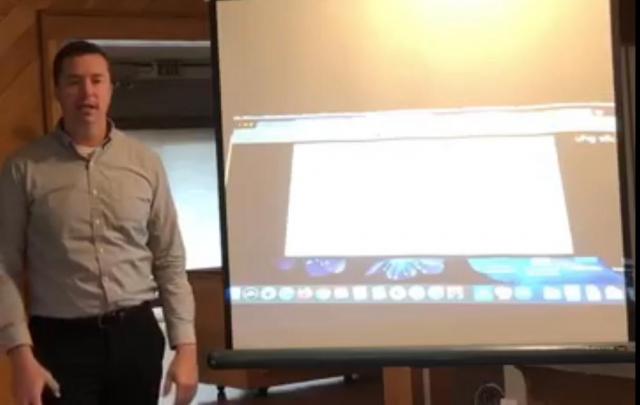At last week's Vinton Kiwanis club meeting, Superintendent Kyle Koeppen spoke to the group. Sharing some of the demographics of the school he gave a presentation to the group.
The school district is just about split evenly between male and female students he said. A number that has increased across the state and is true in Vinton is that about 40% of the students qualify for free student lunches. This number is determined by how many people are in your household and figured in your income. Other random facts included were that there are two that are English learners, where English is not native to the student.
Every October, the schools certify their enrollment. This year enrollment is up a little bit Koeppen said which will help next year. Each district receives a per-pupil state allotment of funds (The school district is paid a certain amount per student each year). The downside is that the school district currently has 140 students who have chosen to open enroll out of the district which affects the district's budget. When students open enroll out of the district, the Vinton-Shellsburg district pays for that student to whichever district they are going to, but Vinton-Shellsburg won't be paid by the state for that student until next year.
The Every School Succeeds Act, ESSA, is a federal guideline that creates those requirements that a school must meet. Koeppen reported that each of our school buildings is now meeting the "Targeted and Comprehensive Status" requirements for all of the student needs.
A great point of interest is that the school is exceeding the state average in reading and math. One of the areas of improvement is our graduation rate which varied from 86% in 2018, while the state average is 95%, followed in 2019 where our rate was 94%. This number of course varies according to how many graduate in each class each year.
The attendance rate has been great this year, despite COVID. The absentee rates have stayed at 3% or below, so this is also good news considering all of the COVID numbers in the county.
Unfortunately, with the school having to adjust because of COVID, the proficiency numbers from last year and this year are drastically different. For K-6th for 2019 of the 96% screened last year, 85% were proficient at that first benchmark. However, this year with COVID, that number dropped down to 54%. Mrs. Fleming who came along for the presentation explained that part of the problem is that Kindergarteners for example, weren't able to finish the year where they needed to finish the alphabet. That delayed their ability to learn to read. So teachers are having to work extra hard to get the students caught up.
Math was analyzed from K-8th 2019 data showed that students didn't slide nearly as much as in reading. Some of the theories for that is that the math carried over into what Mrs. Fleming referred to as "math-talk" lessons. They think that perhaps that helped to hold the scores up closer to where they should be.
At the conclusion of the presentation, Kiwanis members were able to give feedback on what they think that the schools should provide for children in the community. Their responses included: quality education, lifelong learners, a sense of belonging, problem solvers, skills in a safe environment and etc. The group focused on the well being of students, which Koeppen said was also seen in the School Improvement Group results.

Comments
Submit a CommentPlease refresh the page to leave Comment.
Still seeing this message? Press Ctrl + F5 to do a "Hard Refresh".